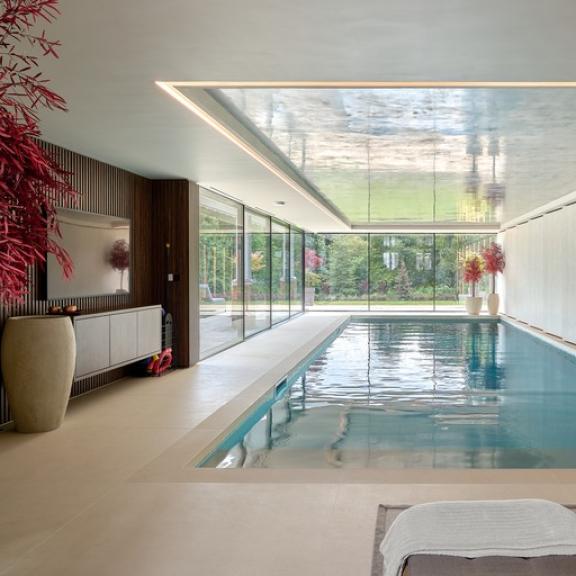What to expect when working with an interior designer
If you haven’t called on a professional interior designer before, what can you think likely of the process? We asked a selection of BIID members to explain.
Employing a professional interior designer to carry out services for you for the very first time can involve a steep learning curve. What can you expect about what they will do and the process? And, as the term interior design actually covers a range of disciplines, you may also be seeking to understand the extent of what an individual designer or practice can do whether your project is a residential or a commercial one.
To answer these questions and more, we’ve asked four professional interior designers and BIID members to talk about the expectations you can have of a designer.

Working with a professional interior designer
First of all, it’s important to know what ‘interior design’ could mean. ‘It is an extremely broad term and can encompass a huge variety of design disciplines depending on the training or experience of the individual designer or practice,’ explains Rik Smith, director of Design Emporium.
‘An interior designer may have experience in interior architecture, spatial planning, lighting design, kitchen and cabinetry design, selection and specification of fixtures and fittings, and final styling. Some designers will be predominately involved in the spatial planning and interior architecture while others have skills more suited to undertake styling/interior decoration.’
What types of project might an interior designer work on?
A professional interior designer can be employed for both residential and commercial projects.
‘For clients considering any type of works to their house, whether an internal remodel to enhance the layout, altering a kitchen space or bathroom, or styling of a single room that requires fixtures, fittings and equipment specification, a trained interior designer should be competent to undertake all necessary works,’ says Rik.
‘On larger scale projects, an interior designer should be used to working collaboratively with the architect and other design team from an early stage to assist in the spatial planning of the property, including detailed furniture layouts, whilst also inputting on the required fixed finishes that are needed for the construction stage.’
‘If only internal transformations are required, then a skilled designer with technical knowledge of building regulations and necessary approvals would be able to guide a client through the entire process.’
What does a professional interior designer bring to a project?
Expect a breadth of attributes if you employ a professional interior designer. ‘An interior designer brings fresh eyes, perspective, creativity and enthusiasm to a project,’ says Sharon Simpson, founder & head creative of Dark Romantix Design Studio. ‘Also a realistic view of what can and cannot be achieved.’
Interior designers’ project management skills are key. ‘They will bring an organised approach to what can be a chaotic and fraught undertaking,’ says interior designer Naomi Astley Clarke. ‘With an experienced interior designer you will be working with someone who has “seen it all” and can come up with quick and simple solutions to any problems that may arise.
‘A designer will be responsible for spending your money wisely and carefully and will be able to take a considered approach to your project,’ she continues. ‘All studios vary. Some interior design studios will be able to provide full construction drawings, planning permissions, QS (quantity surveying) services and M and E (mechanical and electrical systems) consultancy, others will simply provide soft furnishings – do your research to find the practice that most suits your needs.’
Be mindful that a professional interior designer’s input needs to occur early in the project for optimum results. ‘Many residential building works are often undertaken with a minimal design team, or with the interior designer being brought in towards the end of the project,’ says Rik. ‘In many projects the cost of fixtures (including bathroom/kitchen etc), fittings, and equipment will be anywhere from 30 to 60 per cent of the build cost, so the use of an interior designer in the early stages of large projects can ensure much greater knowledge is brought to the overall project budget.’
Should you have different expectations of large and small practices?
You can find interior designers and interior design practices via the BIID, which is the UK’s only professional institute for interior designers. Search find an interior designer by designer or practice name, or to find a professional within a specified radius.
Interior designers might work within small practices or large, so what can you expect according to which you select? ‘Both large and small practices will provide a personal contact,’ says Robert Thake of Robert London Design. ‘In a larger practice this may be from a senior designer as opposed to the design director.
‘Any home is extremely personal and the client will understandably always want to know the design of their own home in detail. With this in mind they need to have a close and trusting relationship with their lead designer, and this may influence the type of practice they are looking to work with.’
Before selecting a practice be completely sure it is the right fit. ‘Interior design is a broad profession and the client needs to be fully briefed on the designer’s full scope and capabilities before starting a project,’ says Robert.
Will a designer manage other professionals and tradespeople?
Wondering if employing a professional interior designer entails their management of others involved in the project? ‘In most cases an interior designer will assist in the implementation of the works and co-ordinate them,’ explains Rik. ‘This is certainly the case for smaller projects, and will depend on the size of firm.
‘If the project is larger in scale with other professionals employed (architect/project manager/main contractor) then the interior designer may have limited input to the implementation and time. However, if the interior designer is the lead professional, they will often co-ordinate all works, managing time and budgets. The greater the service required, the greater fee that is applicable.’
How much contact is there between designer and client during the process?
It’s vital to be aware of the level of contact to reckon on. ‘This is an important detail to discuss at the start of a project,’ says Sharon. ‘The interior designer will discuss with their clients how often and the method with which they like to be contacted. And what to do in the event of an emergency.’
Contact levels will vary according to both project scale and the point it has reached. ‘At different stages of the project the designer will have varying input, and at times may not be required,’ says Rik. ‘In some instances where only redecoration and styling of a single room is required then I would only anticipate a few meetings between client and designer, but for larger projects incorporating full houses the designer may be in daily or weekly contact, especially during the implementation phase.’
How should you expect to be charged for interior design work?
There is no single fee structure when employing a professional interior designer. ‘Charges will vary from studio to studio,’ explains Naomi. ‘Some will charge fixed fees based upon a percentage of the overall cost of the job, some will charge according to square footage, some will charge hourly and others still may charge differently according to the margins they receive on their procurement (ie, splitting trade discounts). There are several ways to charge and usually a designer will find one that will work well for both designer and client. This can be explored in the initial meeting and then made clear in a follow-up email and fee proposal once the brief and project has been understood.’
What else should potential clients know?
We asked our contributors about the assumptions those who are employing an interior designer for the first time most often hold that aren’t correct.
One issue is how soon their chosen professional should be involved. ‘The earlier an interior designer is appointed, the better,’ says Robert.
Know, too, that an interior designer can meet far more expectations than is often supposed. ‘Many people believe an interior designer is limited to the soft furnishings and dressing/styling of a house, and for all other works either specific designers (kitchen/bathroom designers etc) or architects are required,’ says Rik.
‘There is significant cross over between an experienced interior designer, interior architect and architect, and usually an interior designer has much more capability than is known,’ he adds. ‘I often find that to produce a project that flows and has a single design intent running throughout then an interior designer is key and should design or influence the entirety of the project as they will ensure continuity of finish and style.’
Have a look at our other resources available below
A Client's Guide to Working with an Interior Designer
Explore new resources from the BIID. Seeing a padlock? Just login or become a member to view.
View the highlights from our 60th anniversary party
We asked Anna Burles: What makes the perfect software?
Discover the smart home technology awards with Platinum Partner, CEDIA
Explore the latest, member-exclusive, templates designed to make your life easier.
University of Gloucestershire wins the BIID Student Design Challenge 2025.





